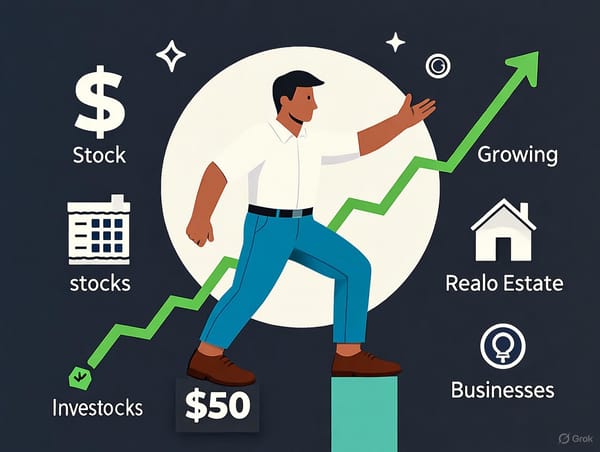Building a Community from the Ground Up
Start building a vibrant community right where you are by leveraging your existing relationships, passions, and spaces to foster authentic, meaningful connections.

Community-building doesn’t require a megaphone, a massive network, or endless resources. It starts right where you are—with the people, passions, and places already in your life. By beginning small, you can create authentic, meaningful connections that grow into a vibrant community. Here’s how to turn your existing relationships and interests into the foundation of something lasting.
Why Start Small?
Big, thriving communities—think bustling online forums or packed local meetups—can feel intimidating. But starting small offers unique advantages:
- Manageability: Focusing on a few people you know allows you to build deep, quality connections.
- Authenticity: Rooting your community in your genuine passions ensures it’s sustainable and meaningful.
- Low Risk: Small groups let you experiment, make mistakes, and refine your approach without high stakes.
Humans naturally connect in small circles. Anthropologist Robin Dunbar suggests we can maintain about 150 relationships, with a tight inner circle of five to ten. Starting with trusted friends, colleagues, or neighbors leverages existing rapport, creating a ripple effect as your community grows.
Step 1: Identify Your Starting Point
Begin by taking stock of what you already have: your people, passions, and places.
Your People
Who’s already in your orbit? Think of friends who share your love for sci-fi novels, coworkers who debate industry trends, or neighbors you chat with at the dog park. These connections, built on trust, are your community’s foundation. For example, Sarah, a graphic designer, started a local art meetup by inviting two colleagues who loved sketching. That trio grew into a monthly event with dozens of attendees.
Your Passions
What gets you excited? Whether it’s coding, cooking, or climate advocacy, your passions attract like-minded people. Building around what you love keeps you motivated and gives your community a clear purpose. For instance, a passion for sustainable fashion led Maria to start a clothing swap group, now a thriving local hub.
Your Places
Where do you naturally connect? Physical spaces like coffee shops, libraries, or community centers, or virtual ones like Discord servers or group chats, are where communities take root. Choose accessible, comfortable spaces for early interactions, like a park for a casual meetup or a Zoom call for a global group.
Step 2: Take the First Step
Keep your first move simple and intentional. Here’s how:
Reach Out with Intention
Invite one or two people to connect over a shared interest. For example, text a friend: “I know we both love hiking. Want to hit a trail this weekend and talk about starting a group?” Keep it low-pressure and specific to spark engagement.
Host a Small Gathering
Gather five to ten people for a focused event, like a potluck, a photo walk, or a virtual discussion. Set a clear purpose—e.g., “Let’s share our favorite books and brainstorm a book club.” Small groups foster meaningful conversations. When Alex hosted a board game night for six friends, it became a weekly tradition that now draws 20 regulars.
Leverage Digital Tools
If in-person isn’t feasible, use platforms where your audience hangs out. Post in a local Facebook group, start a Reddit thread, or create a WhatsApp chat. For example, a post in a neighborhood app asking, “Anyone want to discuss eco-friendly living?” could kickstart a virtual sustainability group.
Step 3: Nurture Early Connections
Early interactions set your community’s tone. Focus on trust and consistency.
- Listen Actively: Ask members what they value or want from the group. For a coding club, inquire about preferred programming languages or learning goals. This builds rapport and shapes a community that meets everyone’s needs.
- Establish a Rhythm: Set a regular cadence, like monthly meetups or weekly online chats. Start with a frequency you can sustain—once a month works well. Consistency keeps people engaged.
- Celebrate Small Wins: Highlight milestones, like your first meetup or a member’s great idea. Recognizing these moments fosters a sense of progress and belonging.
Step 4: Grow Gradually
As your community gains traction, expand thoughtfully to maintain intimacy.
- Invite with Purpose: Ask members to recommend others who share the group’s values. For a local history club, invite museum buffs or history podcast fans. Organic growth keeps the community cohesive.
- Share Ownership: Delegate tasks like event planning or moderating discussions. When Priya’s running group grew, she asked a member to lead weekly warm-ups, deepening group investment.
- Stay True to Your Roots: Revisit your core passions and values regularly. Say no to opportunities that don’t align, like a commercial sponsorship for your grassroots book club.
Overcoming Challenges
Community-building has hurdles. Here’s how to tackle them:
- Feeling Overwhelmed: Avoid burnout by starting small and setting boundaries. If weekly meetups feel like too much, try biweekly ones.
- Low Engagement: If participation lags, ask members for feedback. Maybe the time or format isn’t working. Experiment with new ideas, like switching to casual discussions.
- Conflict or Misalignment: Set clear guidelines for respectful communication. If someone’s vision diverges, kindly discuss whether the group still fits their needs.
The Ripple Effect
Starting small creates a ripple effect. One coffee chat can lead to a regular meetup, which can grow into a community touching dozens of lives. Think of it like planting a seed: with care and time, it grows into something vibrant.
So, what’s your first step? Text one person today. Share one passion. Start where you stand, and watch your community blossom.





